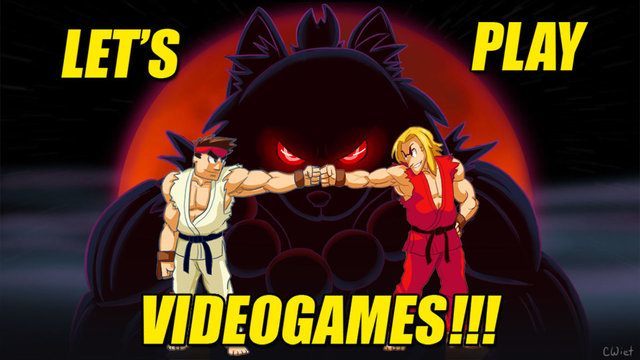Sony’s latest stunt drew ire from gamers everywhere when the company tried to trademark the phrase “Let’s Play”. Over the past few days, the U.S Patent and and Trademark Office found the phrase to be “merely descriptive.” They also noted that there is already a Georgia-based company holding a trademark that’s a bit too similar; making it unlikely that Sony will succeed in their efforts.
Sony has until the 29th of June to make an argument against this and continue pursuing the trademark. But that’s not quite what I wanted to talk about. I’m more interested in why they attempted to do this in the first place. Considering the fact that they’ve been playing their cards right with the current generation of consoles and even scored a major spike in dedicated consumers, I’d think they wouldn’t want to do anything that could cause them to be looked on in a negative light.
Let’s Plays on YouTube

We’re all thinking it, and I daresay we’re not wrong… this probably is the main factor behind the trademark attempt. The general consensus is that this was just a way for Sony to pull the plug on these types of videos on the internet.
What would you do if potential consumers get the full experience your product offers without buying it for themselves?
It’s easy to point the finger at Sony for doing this, but are they wrong to try?
I’m not saying I agree with shutting down videos and channels on YouTube (or other video sharing/streaming outlets) because a company feels threatened by them. But we should look at it objectively because, like it or not, Let’s Play videos are not entirely harmless to the gaming industry.
The Bad
To the general audience, a Let’s Play video of any game consists of a person commentating/reacting to the game they’re playing.
But what’s really happening? Viewers are getting treated to a full walk-through of the game. This is fine if the viewers have already bought the game and are playing it themselves, but what about those who haven’t?
This is the main cause of worry for gaming companies and developers everywhere. To be honest, if you look at it from their perspective you can understand why. Put yourself in their shoes: you’re trying to sell the product you made to as many people out there as possible and the primary selling point is the experience you offer your customers.
What would you do if potential consumers get the full experience your product offers without buying it for themselves?
Sure, people don’t experience the game personally but watching someone play a game from beginning to end spoils the experience the game may have had in store for them, whether they’re aware of it or not.
Would you want to go out and buy a game after you just watched someone on the internet play through it entirely? Perhaps, if the gameplay was something special. But what if this is a game that places a lot of emphasis on story-telling and the main selling point is a compelling plot?

Would you feel as excited if you were to go watch a movie that someone just got done spoiling for you? Of course not. Heck, you might not even want to watch it anymore.
Video games are an industry. Gaming companies are running a business. They still have to make a profit. If there’s anything threatening the equation, you can’t blame them for trying to go fix the problem.
The Good
That was just one side of the argument. There still are benefits Let’s Play videos offer.
Most of the time you need only scroll down to the comments section of the video to find people asking what game is being played. In these cases, Let’s Play videos are beneficial in that they’re essentially promoting the game without the developers having to spend a single cent.
If the game primarily focused on the fun it provides via gameplay, it’s perfectly fine to stream entire sessions of it.
Some Let’s Play videos respectfully choose to not feature the entire game and rather just focus on one particular part or level. Others still just make a compilation of highlights from the gameplay which entertains its intended audience.
So what can be done?
Let’s Play videos have been popularized by so many big name YouTubers now that it’s a widely accepted phenomenon. What we can do to make peace with the gaming companies who see this as a threat is to tie up the loose ends from our side and ensure that there is no way these videos can hurt the revenue the games would generate.
If you’re a person looking to make a Let’s Play video, see if the game you want to play is fit for one. Ask yourself if you would still be interested in the game even after you spent hours sitting through your Let’s Play session.
If the game primarily focuses on the fun it provides via gameplay, it’s perfectly fine to stream entire sessions of it.
Most importantly, do not do Let’s Play videos of games focused on telling a story! It’s disconcerting seeing so many Let’s Play videos of titles like Life is Strange. Can you really blame developers and companies for feeling threatened when you essentially offer the experience of their products for free on an online video streaming platform?
Just find a way to balance the scales. Yes, companies like Sony along with a majority of the gaming industry generally don’t like Let’s Play videos, but we can demonstrate that they’re not all bad by showing some respect to the games we choose to showcase online.







Published: Jan 30, 2016 02:42 pm